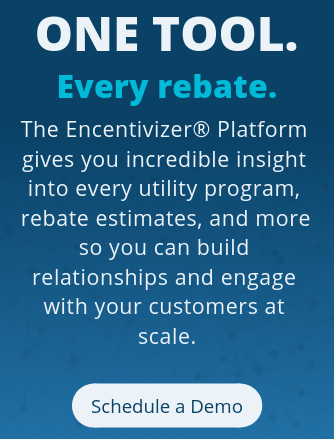
Horticultural lighting is a fast-growing market in the LED industry. With a focus on year-round cultivation and the quest to find the perfect lighting for all kinds of plants and flowers, there is new technology constantly being developed by existing and new manufacturers. It’s all about determining the right light for the specific growing environment - whether it’s for germination, photosynthesis, growth, or flowering - all while trying to save energy.
With that quick background of LED horticultural lighting, let’s take a deeper dive into utility programs and explore how the DLC® Hort Qualification is shaping up.
Utility Incentive Programs - Horticulture
Utility Rebate programs are starting to offer incentives specific to LED horticultural lighting, but lighting for plants is different from lighting for humans. As such, rebate programs may have LED incentives specific to agriculture lighting that have nothing to do with plant growth so be sure you find the correct rebate category. There is limited information around utility rebates for horticulture, but here are some areas utilities will be looking at when developing programs for horticultural lighting.
Areas of focus for rebate programs are utilizing photosynthetic photon efficacy (defined as: how efficient a horticulture lighting system is at converting electrical energy into photons of PAR [photosynthetically active radiation]) and micromoles per joule (defined as: for every joule there are a certain number of photon micromoles that are produced) instead of lumens per watt.
Reducing light pollution and making sure the lights are as efficient as possible while the light is concentrated in a certain spectrum to ensure photosynthesis is happening as efficiently as possible will be a common theme across all utility programs. One thing to keep in mind is that light is an input into the production process and even if it’s reducing energy savings, but doesn’t work as well, no one will use it.
Also, it will be important for programs to look at photosynthetic photon flux density (PPFD), the greenhouse equivalent of foot-candles on a work surface in an architectural application. Programs should compare the energy consumption of lighting systems when the provide the same PPFD on the plant canopy, looking beyond luminaire efficacy to be sure the LED based systems produce the anticipated energy savings.
Early utility rebate program offers a variety of rebate opportunities. Focus on Energy in Wisconsin offers $0.25/Watt reduced for LED horticultural lighting fixture replacement. Efficiency Vermont has an agricultural lighting program but clearly states to contact them to inquire about potential custom incentives for plant growing applications. Delta Montrose Electric Association in Colorado already has a prescriptive offering and pays $125 per fixture for grow lights.
While there is this prescriptive offering now, utilities will likely implement custom programs until they have enough data to determine what kind of prescriptive rebate program should be designed.
One big question right now, will programs take into consideration if they are DLC® listed or not? It’s hard to say at this time. Over the next several months, more information will be available both on the qualification and effects on utility rebate programs.
DesignLights Consortium® Hort Qualification
The DLC® Testing and Reporting Requirements for LED horticultural lighting required a new QPL (Qualified Products List). Horticultural lighting LEDs must comply with the requirements within the Technical Requirements Version 1.1 that went into effect March 6, 2019.
The DLC Testing and Reporting Requirements for LED-based Horticultural Lighting enable reliable and efficient horticultural products to be qualified on a new DLC Horticultural Lighting Qualified Products List (QPL).1
Horticultural lighting products using LEDs must comply with the provisions of the Technical Requirements to be eligible for listing on the DLC Solid-State Horticultural Lighting Qualified Products List (“Horticultural QPL”, "Hort QPL"). Products eligible for DLC qualification must be complete LED light fixtures. That is, they must be electromagnetic radiation-generating devices analogous to luminaires as defined by ANSI/IES RP-16 sections 6.8.5 and 10.3.1.1
Eligibility
Only products designed and intended to operate with standard North American nominal AC line voltages are eligible for DLC qualification. The following are further eligibility rules for horticultural lighting products:
- Products that are lamps (analogous to RP-16 sections 6.8.5.3 and 6.8.5.4), light engines (analogous to RP-16 section 6.8.5.5), or identified as retrofit kits intended to replace the light sources or other structures within an existing fixture, are not eligible.
- Fixtures that incorporate light sources other than LED, whether as sole-source or as LED-hybrid fixtures, are not eligible.
- Fixtures that employ externally-supplied active cooling systems, including circulating-liquid and ducted forced-air, are not eligible. Those that incorporate internal active cooling systems that can be measured via standardized fixture test procedures, such as on-board fans, are eligible.
There are currently 13 products on the horticultural QPL and DLC has applications in the queue. This list will continue to grow and will be a resource to utility programs to ensure that quality fixtures that can deliver performance over time will be installed in horticultural applications the same way that the SSL QPL did for LED lighting products.
Key Takeaways
When looking at the performance and energy savings benefit of LED horticultural lighting there are many complicated factors to consider. Utility rebate programs will continue to evaluate these factors in their program design with a focus on energy savings. The DLC will continue to work in conjunction with these utilities, manufacturers, and horticulture lighting designers to establish agreed upon metrics for LED horticulture fixtures to be evaluated against. While there are still a lot of moving pieces here, LED can save energy in horticultural applications so they will be used. New products and programs will continue to come online so be sure to stay up to date on what is available when you are working on new LED opportunities in horticulture installations.
SOURCES
1 https://www.designlights.org/horticultural-lighting/technical-requirements/
.png?width=500&name=2019%20e%20news%20spotlight%20logo%20(1).png)




